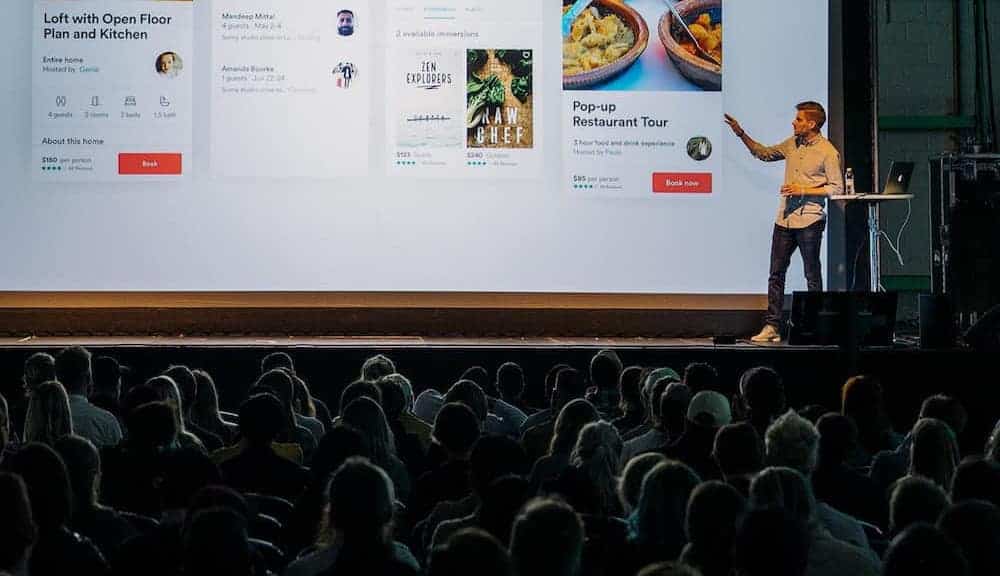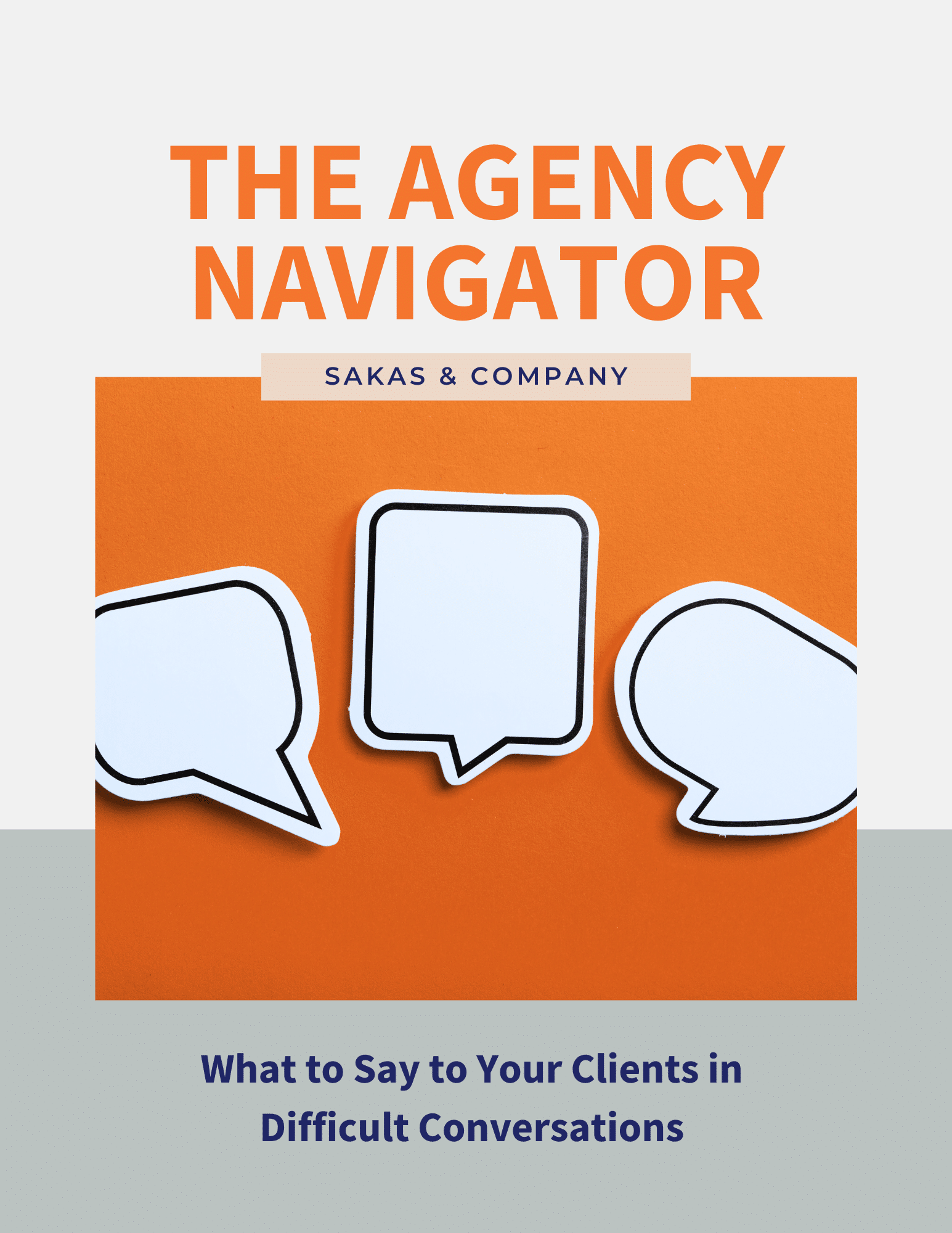Ever meet someone at an event who seemed like a perfect sales prospect—and they even said they wanted to talk with you afterwards—but then they never responded? It’s frustrating, and it happens a lot.
To fix this, let’s look at why sales prospects “ghost you” by going into The Abyss, my cut-and-paste email template to improve your post-event sales followups, and a breakdown of why the email can help you get better results. It’s based on the consultative process I use in helping agencies.
Why did prospects disappear on you?
They disappeared because you incorrectly assumed they were qualified. Why weren’t they qualified? Perhaps it wasn’t a priority, or they don’t have budget, or something blew up when they got back to the office, or they just didn’t want to say “no” to your face.
If they expressed interest in getting help, it’s reasonable to propose a call after the event. But recognize that their saying “let’s talk” costs them nothing—that “yes” isn’t a real two-way commitment.
Let’s look at my email template, and then I’ll explain why it works.
[EMAIL TEMPLATE] Send this after meeting a sales prospect at an in-person event
SUBJECT: Helping <FirmName> (via <ConferenceName>)
Hi <TheirName>,
Nice to meet you at <ConferenceName>; enjoyed chatting about <SomethingMemorable>! Here’s the article I mentioned about <TopicTheyAskedAbout>: <Link>
You mentioned wanting to chat about my potentially helping <FirmName> with <TopicArea>. We typically work with firms that invest at least $7,000 to $20,000 a month in paid marketing help.
If you’re still interested, how soon would you like to do an exploratory call?
1) This week
2) Later this month
3) Sometime after that
Based on that, I can follow up with some date/time options. (And if we’re not a fit, I’m glad to point you to someone who’d be a better match.)
Regards,
<YourName>
P.S. <RapportPoint>
Why the email template can boost your sales efforts
First, go for “fast failure.” Recognize that someone saying they want to do a sales call doesn’t mean they’ll still want to do a sales call when they’re home after the conference. Make it safe for them to say “no” or “not yet.” Saying you’ll even point them elsewhere further-reduces the pressure on them.
Second, recognize that your timeline is likely more urgent than their timeline. They’ve got a million things to juggle, whereas closing the deal is one of your top priorities. Slow down; you’ll scare them away! (This is just one reason to keep your sales pipeline full.)
Third, give them three options for how soon to do the call. Why? From my Reason-Options-Choose framework, this lets them “vote” on how important it is for them to speak with you. Don’t give exact date/time options in your first message—that’s a pushy, cheesy sales tactic, and it clutters your calendar with “holds” for people who may not respond.
Fourth, recognize it’ll take a series of followups to get action. The more you can automate (or semi-automate), the better results you’ll get, as long as prospects don’t feel like they’re dealing with a robot.
Fifth, lean toward listing a budget range for your services. You don’t have to mention budget, but I think you should—it’s a better use of everyone’s time. A big range is fine—your goal is to get them to self-select in or out.
How to get better results
It all starts with a good in-person conversation—if your conference chat was bad, even the best post-event email won’t save things.
Ask them good qualifying questions at the conference. Your goal is to get to know them better, to sort out whether there’s a fit. This includes getting a sense of their overall business direction and how their current needs fit into that. This doesn’t have to be super-complicated; you can ask something like, “How does that fit into your annual goals?” You might also throw out wide budget ranges of what’s typical, to see their reaction.
Take immediate notes on your conversation at the conference—including their needs, their urgency, and any rapport points (e.g., you both used to live in New Jersey). This might be writing keywords on their business card, typing notes in your CRM’s mobile app after they step away, or recording a voice memo about them (remember to mention their name and company in the memo!).
No, really, take notes—immediately. Do it fast, or you’ll forget—which dooms you to a generic followup email. They’re meeting with dozens or hundreds of people, and they don’t care about this particular followup as much as you do. This includes identifying any articles on your website that would be helpful to them.
Pre-schedule time for your post-conference followups. You know they’re going to happen, so get them on the schedule. Consider pre-shipping your sales support person a photo of business cards to add to your CRM and (if fast enough) for sending LinkedIn requests.
Look for “rapport points.” These are things you have in common. They don’t guarantee sales success, but they help make you more memorable, which improves your response rate. These could be about where you and they grew up, went to school, worked in the past, share a favorite hobby, or have an unusual family similarity.
Accept that not everyone’s going to respond. If email is easy to avoid, why use email for the followup? Because it’s less interruptive and a better fit for a consultative sales process. If your prospects are sales-y, calling first can work—but I recommend emailing first unless someone explicitly said, “Please call me about this next week.”
Pre-reserve time immediately after your session, if you’re speaking at the conference. If someone wants help, they’ll often line up to ask questions after your talk—be ready for it. Depending on the number of people and their level of interest, you can set up an impromptu 15-minute exploratory meeting down the hall with a strong prospect after the line dies down.
Applying this to boost sales at your agency
Now it’s time to take action! Many of my clients add a version of this email to their sales templates in HubSpot or another CRM. They also start pre-scheduling post-conference followup time.
If you aren’t handling sales directly at your agency, meet with your sales team to enlist them to try these techniques. If you do handle sales directly, speak with your sales support person to discuss how to incorporate this into your agency’s process.
QUESTION: What’s the first thing you’re going to change?
Photo by Teemu Paananen on Unsplash


